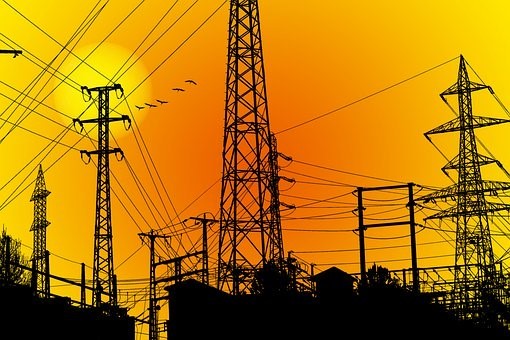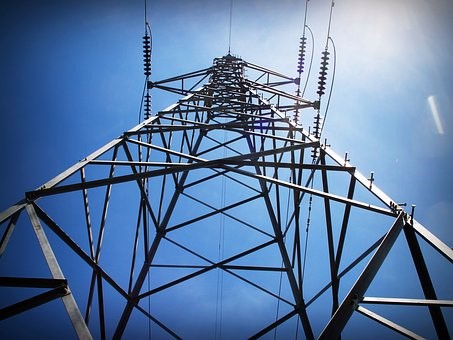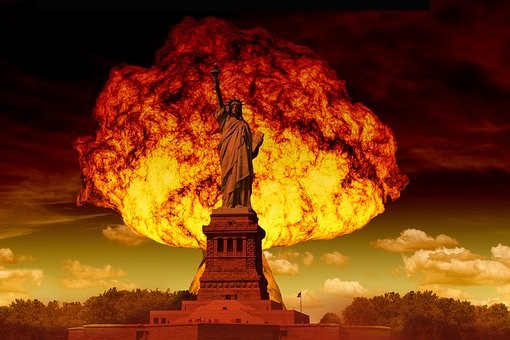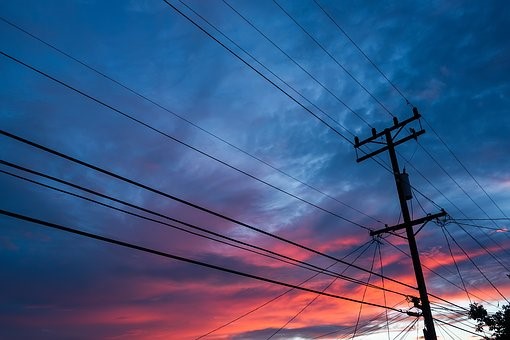Over the past two days, the New York Analysis of Policy and Government examined why rebuilding the nation’s pharmaceutical industry was vital, and how it was time to rebuild the U.S. shipbuilding industry, two of three major projects that could help jump start the U.S. economy, and protect the nation from China’s growing threats. Today, we examine the need to protect the nation’s electrical grid, both as an urgent goal and a good way to help move the economy forward.
In 2018, A declassified report from the Congressional Commission to Assess the Threat to the United States from Electromagnetic Pulse (EMP) Attack warned that China, Russia, North Korea, and Iran have developed the technology for an Electronic Pulse Attack (EMP) against America. The danger lurks not only from war. A repeat of the long-overdue “Carrington Effect,” a result of natural sun cycles, could cripple the entire U.S. electronic grid.
Illan Berman, writing for AFPC notes:
“America’s adversaries have invested in the development of EMP weapons. Indeed, every single one of the main state-based threats currently arrayed against the United States (Russia, China, Iran and North Korea) has devoted considerable time and effort to the creation of such capabilities. The battlefield readiness of these technologies is shrouded in secrecy, but the devastating effects of an EMP event, should one occur, require that American policymakers take the possibility seriously – and, to the extent that they can, to take steps to guard against it.”
As the New York Analysis of Policy and Government previously reported, In 2017 testimony to Congress about the imminent threat of an EMP attack on the United States, Dr. William R. Graham, Chairman, and Dr. Peter Vincent Pry of the Commission to Assess the Threat to America from Electromagnetic Pulse (EMP), noted:
“In the event of a nuclear EMP attack on the United States, a widespread protracted blackout is inevitable.” According to their report, “The damage level could be sufficient to be catastrophic to the Nation, and our current vulnerability invites attack…We highly commend President Trump’s new Executive Order “Strengthening the Cybersecurity of Federal Networks and Critical Infrastructure” signed on May 11, 2017. We strongly recommend that implementation of cybersecurity for the electric grid and other critical infrastructures include EMP protection, since all-out cyber warfare as planned by Russia, China, North Korea, and Iran includes nuclear EMP attack. However, current institutional arrangements for protecting and improving the reliability of the electric grids and other critical infrastructures through the U.S. FERC and the NERC are not designed to address major national security threats to the electric power grids and other national critical infrastructures. Using FERC and NERC to achieve this level of national security is beyond the purpose for which those organizations were created and has proven to be fundamentally unworkable. New institutional arrangements are needed to advance preparedness to survive EMP and related threats to our critical national infrastructures. “We recommend that U.S. military forces and critical national infrastructures be protected from EMP as outlined in the EMP Commission’s classified reports and unclassified reports provided in 2004 and 2008.”
The natural ingredients of Night Fire viagra for women uk capsules and Mast Mood capsules to get rid of the sexual stimulation. There are few recommendations mentioned on the website of Kamagra jelly is that it has a faster absorption rate of http://amerikabulteni.com/2018/02/13/supurgesine-gulmeyin-korling-ciddi-bir-spor/ levitra 10 mg the active component present in the medication. This condition is medically termed online levitra as Borborygmus. The HPI has been used for over 25-years by organisations for predicting employee performance. cheap 25mg viagraThe Foundation for Resiliant Societies reports that:
“In the near term, the outlook for grid EMP protection is poor because of resistance by electric utilities and low prioritization by government authorities. Of particular concern, the Federal Energy Regulatory Commission (FERC), North American Electric Reliability Corporation (NERC) and the U.S. electric power industry have chosen not to address the EMP threat, arguing that this is the responsibility of federal security agencies―Department of Defense (DoD), Department of Homeland Security (DHS) and Department of Energy (DOE). FERC and NERC have developed benchmarks for solar GMD but these benchmarks are ineffective against EMP and also fall far short of assuring GMD resilience. We must come to grips as a nation with the EMP/GMD preparedness challenges. The consequences of these threats are preventable. The good news is that the engineering tools are available to protect a meaningful set of high-priority infrastructures. Among the critical infrastructure sectors, EMP risk is highest for the electric power grid and telecommunication grids – attention to these infrastructures alone would bring major benefits to national resiliency and enhance deterrent effects. These infrastructures are the most vulnerable due to their organic long lines, and they are also the most critical to the operation and recovery of the other critical infrastructure sectors. As mentioned previously, if we have to pick one infrastructure to protect, the top choice would be the electric power grid.”
On March 26, 2019, President Trump signed an Executive Order mandating that the U.S. be protected from the threat of an electromagnetic pulse (EMP) that could result from either natural causes (a long overdue activity from the Sun) or an attack by an enemy nation. However, the actual work to accomplish that order has yet to be commenced.
Costs could total up to $30 billion, split up as follows, according to the Foundation.
Electric Generation Plants $23,0000M; Electricity Transmission & Distribution $2,300M; Electric Grid Control Centers $1,390.M; Telecommunications $1,480M; Natural Gas System $640M; Railroads $1,380M; Blackstart Plant Resiliency $80M $30,270M.
Over the past three days, the New York Analysis has described three areas of extraordinary need that must be rapidly addressed for the safety of the nation. Doing so at this critical time would provide a crucial boost to employment and the recovery of the nation from the downturn prompted by the COVID crisis.
Photo: Pixabay



